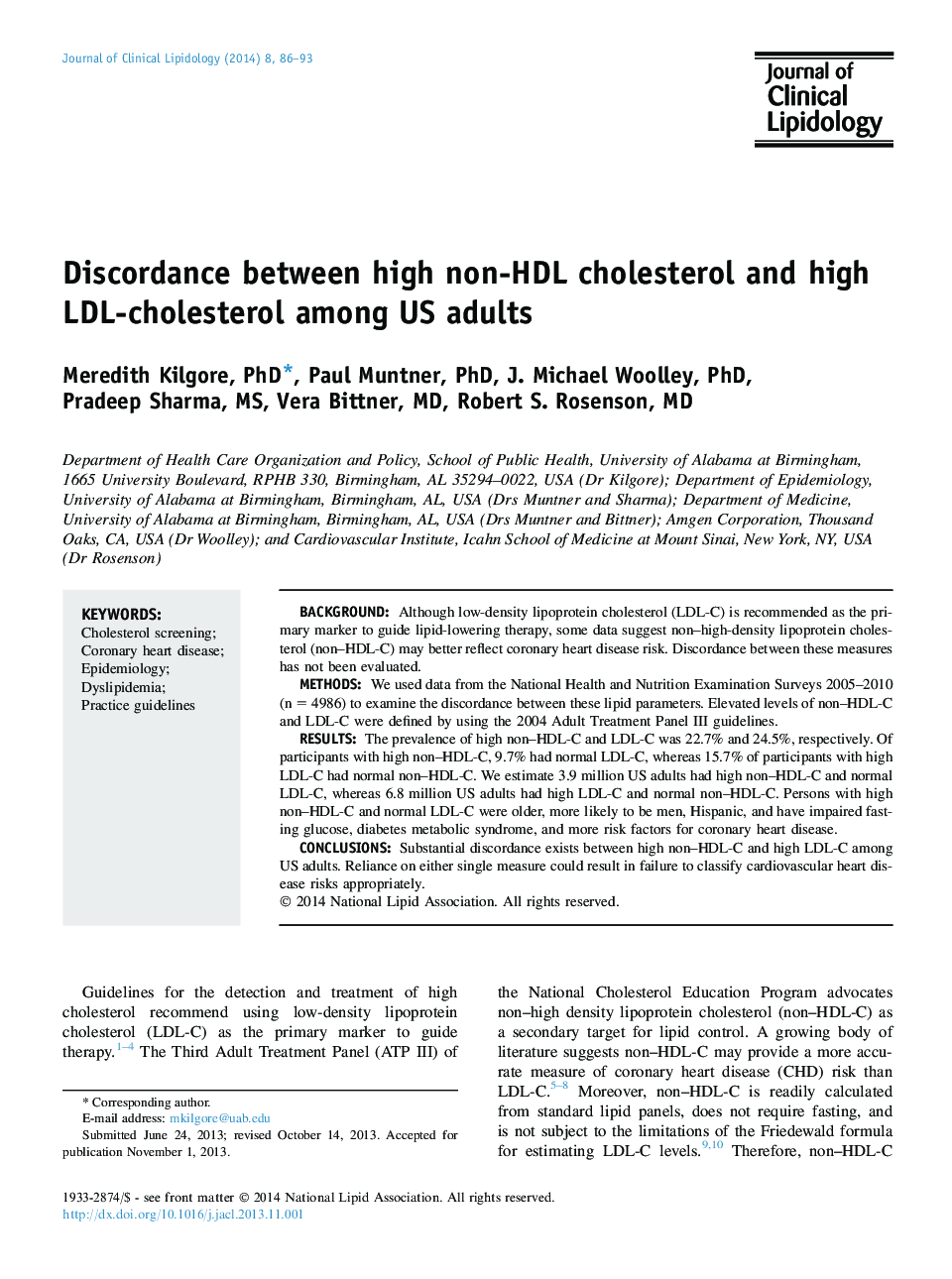| Article ID | Journal | Published Year | Pages | File Type |
|---|---|---|---|---|
| 2965852 | Journal of Clinical Lipidology | 2014 | 8 Pages |
►High non–high-density lipoprotein cholesterol (non–HDL-C) is a risk factor for coronary heart disease (CHD) events.►Non–HDL-C imperfectly correlates with low-density lipoprotein cholesterol levels.►Ignoring non–HDL-C could lead to undertreatment of persons with elevated CHD risks.
BackgroundAlthough low-density lipoprotein cholesterol (LDL-C) is recommended as the primary marker to guide lipid-lowering therapy, some data suggest non–high-density lipoprotein cholesterol (non–HDL-C) may better reflect coronary heart disease risk. Discordance between these measures has not been evaluated.MethodsWe used data from the National Health and Nutrition Examination Surveys 2005–2010 (n = 4986) to examine the discordance between these lipid parameters. Elevated levels of non–HDL-C and LDL-C were defined by using the 2004 Adult Treatment Panel III guidelines.ResultsThe prevalence of high non–HDL-C and LDL-C was 22.7% and 24.5%, respectively. Of participants with high non–HDL-C, 9.7% had normal LDL-C, whereas 15.7% of participants with high LDL-C had normal non–HDL-C. We estimate 3.9 million US adults had high non–HDL-C and normal LDL-C, whereas 6.8 million US adults had high LDL-C and normal non–HDL-C. Persons with high non–HDL-C and normal LDL-C were older, more likely to be men, Hispanic, and have impaired fasting glucose, diabetes metabolic syndrome, and more risk factors for coronary heart disease.ConclusionsSubstantial discordance exists between high non–HDL-C and high LDL-C among US adults. Reliance on either single measure could result in failure to classify cardiovascular heart disease risks appropriately.
